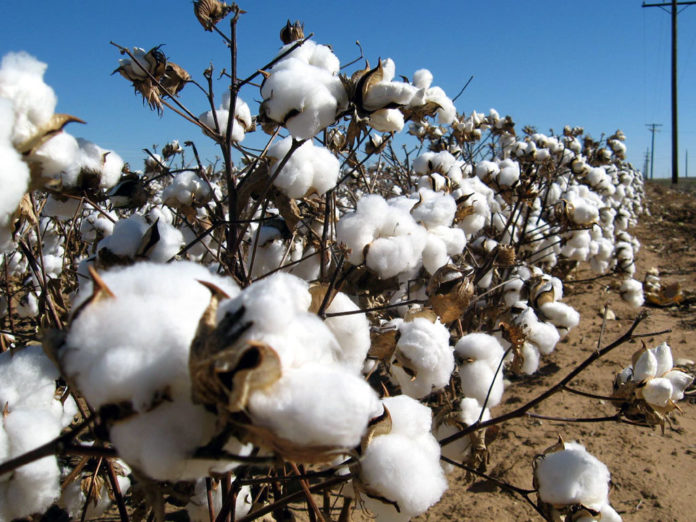The largest manufacturing industry in Pakistan, it contributes 8.5% to our GDP and employs about 45% of the country’s labour force and 38% of its manufacturing workers. The 4th largest producer of cotton with the third largest spinning capacity in Asia after China and India, Pakistan contributes 5% to the global spinning capacity. Today 1,221 ginning units, 442 spinning units, 124 large spinning units and 425 small units produce cotton textiles.
The textile manufacturing sector the single largest export-oriented sector of Pakistan recently spiked to full-capacity production after the government withdrew duties and taxes on import of the raw cotton in January 2020. Islamabad got higher export orders for textiles since China, the single largest textile exporter at world across, was temporarily closed to fight against the deadly coronavirus for the past couple of months. The export of finished goods had been on the rise while the export of raw material including cotton and yarn are on a downward trend, this was a very positive development for Pakistan’s economy. The sector achieved the set export target of $24-25 billion this fiscal year (July-2019 to June 2020). However the coronavirus lockdown has badly hit Pakistan. The textile sector is in shambles with many of their international orders have been cancelled or asked to suspend the shipment of ordered goods for at least three weeks and longer. With textile retailers and outlets closed, there is a complete disruption in the entire domestic textile supply chain, putting at risk the jobs of thousands of factory workers. Pakistan’s textile exports dipped by 4.46% in March. The country’s textile exports stood at $1.039 billion in March 2020 as compared to $1.088 billion in same month of previous year, according to latest data of Pakistan Bureau of Statistics (PBS). Contrast that with Pakistan’s textile and clothing exports jumping nearly 17% year-on-year in February.
The January 2020 draft of GOP’s Textile Policy spells out the steps needed to be taken to revive textile exports which include (1) Restoring profitability of cotton farmers by increasing cotton yield, improving quality of cotton and decreasing the cost of production (2) Strengthening manmade fiber/filament sector to make this chain internationally competitive and export-oriented; (3) Regionally competitive energy pricing fixed for five years; (4) Prompt Sales Tax Refund System; (5) Abolition of Zero- Rating has created serious liquidity crisis for exporting sectors as the current refund system is soaking up market liquidity and is not working; (6) Long Term Financing Facility for the entire textile value chain; (7) Revival of impaired textile capacity and introduction of bankruptcy law. (8) Establishment of Textile clusters and Export Processing Zones with “plug and play” facilities. This draft policy mirrors the situation before the coronavirus crisis. Therefore, a new policy or an amended policy outline must be developed immediately to meet the emergency. Whenever the lockdown is lifted it will take time to revive the economy at large and the textile sector in particular. The immediate direct impact of the pandemic will be long-lasting, the economic recession can span a year or even more than that. The longer lockdown is continued, the deeper the debilitating impacts to the economy will be and the slower the recovery will be. In addition, global demand and consumption are showing a definite slump and all major economies are facing the same difficulties. That means export markets will also need time to recover time that has to be used to keep previously existing market shares at least intact. With fashion weeks and textile fairs cancelled one could go online to keep in touch with old customers and present new ideas and developments.

The revival of the textile sector will need support, a majority of jobs in the manufacturing sector depend on it. GOP needs to formulate a strategy that can prevent the economic slump from turning into an immense financial crisis. We have to take risk and finish the lockdown in the textile sector to take up the slack. A relief package will help to rescue the textile sector. Some immediate measures that could come into that package could be to release the sales tax refunds under the Rs.100 billion relief package for the textiles exporters to resolve cash-flow problems. The salaries of the factory workers during the time when the production is down or not fully revived could be partially subsidised by the government. Tax concessions like the turnover tax and sales tax could be considered. The banks in our country have made good profit and should be encouraged to help our industry to take off after the lock-down by either waiving interest for pre-pandemic loans or at least considerably lowering the interest rates.
The revival of textile exports cannot be achieved with the quantity and quality of cotton produced in Pakistan. For the financial year 2020 about. 15 million bales of cotton are required but only half of that amount is produced locally. That means either the area under cotton has to be raised or the yield has to be improved or both. Compared to other countries our yield per acre is quite low. In addition, the quality of the cotton produced in Pakistan needs to be improved urgently so as to substitute the import of high-quality Egyptian cotton for high-quality demand in textiles. One option that certainly hits the right nerve of the global market is to switch to the production of organic cotton instead of the gene-manipulated variety common in Pakistan that is susceptible to diseases and need a lot of pesticides. The slump in demand caused by the coronavirus crisis gives a time window of opportunity to actively work on implementing such a policy change. In addition, what needs to be improved is the infrastructure so that cotton can be handled cautiously, transport to the next processing module is short, does not face delays which would diminish the quality of the good.
GOP’s textile division declared on its webpage that “The textile sector in Pakistan has an overwhelming impact on the economy, contributing 60% to the country’s exports. In today’s highly competitive global environment, the textile sector needs to upgrade its supply chain, improve productivity, and maximize value-addition to be able to survive. The objectives of the Textile Industry Division are to formulate strategies and programme to enable the textile sector to meet these challenges and attain global competitiveness.” Let us see whether these nice words match deeds on the ground. Success will depend upon implementing the good plans. There is a cycle between cotton production (the agriculture sector) and the textile industry (the manufacturing sector). Both in agriculture and manufacturing, cotton is the backbone of providing the maximum number of jobs in the country. We can only do a lockdown in these sector at the cost of our existence, the disruption of the supply chain from the field to exports will be disastrous. To keep the mainstay of the economy going, we have to take calculated risks.
Contribution by:
Dr. Bettina Robotka

Dr. Bettina Robotka, former Professor of South Asian Studies, Humboldt University, Berlin.




